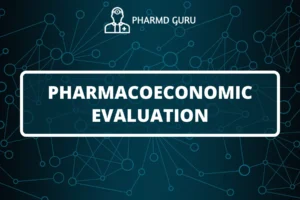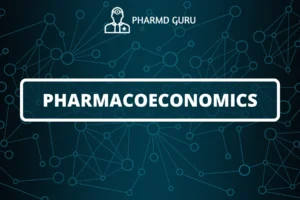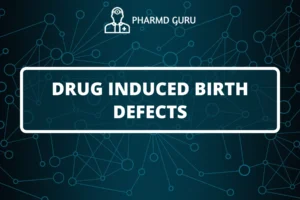Drug utilization review (DUR) is a critical process in healthcare that aims to ensure the safe and effective use of medications. It involves assessing prescription patterns, identifying potential issues, and implementing interventions to optimize drug therapy. Through DUR, healthcare professionals can promote patient safety, improve health outcomes, and enhance the quality of pharmaceutical care. In this article, we will explore the concept of drug utilization review, its objectives, methods, and its impact on medication management.
SCROLL DOWN TO THE BOTTOM OF THIS PAGE FOR ACTUAL NOTES.
TABLE OF CONTENTS:
- Introduction
- Objectives of Drug Utilization Review
- Methods of Drug Utilization Review 3.1 Prospective DUR 3.2 Retrospective DUR 3.3 Concurrent DUR
- Benefits of Drug Utilization Review 4.1 Enhancing Medication Safety 4.2 Improving Medication Effectiveness 4.3 Promoting Rational Drug Use 4.4 Cost Optimization
- Challenges and Considerations
1. Introduction:
Drug utilization review (DUR) is a systematic process that involves reviewing and evaluating medication use patterns to ensure optimal therapeutic outcomes and minimize potential risks. It is an essential component of medication management in various healthcare settings, including hospitals, community pharmacies, and managed care organizations.
2. Objectives of Drug Utilization Review:
The primary objectives of drug utilization review are:
- Identifying and preventing medication errors, such as drug interactions, duplications, or contraindications.
- Evaluating prescribing patterns and adherence to evidence-based guidelines.
- Promoting rational drug use and appropriate medication selection.
- Assessing medication safety and effectiveness.
- Enhancing patient outcomes and quality of care.
3. Methods of Drug Utilization Review:
Drug utilization review can be conducted through various methods, depending on the setting and available resources. The three main methods are:
3.1 Prospective DUR:
Prospective DUR involves evaluating medication orders and patient profiles before dispensing medications. Pharmacists or healthcare professionals review prescriptions for appropriateness, dosage accuracy, potential interactions, allergies, and contraindications. This proactive approach helps prevent medication errors and ensures patient safety.
3.2 Retrospective DUR:
Retrospective DUR involves analyzing medication utilization data after drug therapy has been completed. This method allows for the identification of trends, patterns, and potential issues in medication use. By reviewing past medication utilization, healthcare professionals can assess the appropriateness of therapy, identify potential adverse events, and make improvements in prescribing practices.
3.3 Concurrent DUR:
Concurrent DUR is conducted in real-time during patient care. It involves reviewing medication orders and patient profiles to identify any issues or concerns promptly. This method allows for immediate intervention, such as adjusting dosages, monitoring for potential interactions, or addressing medication-related problems.
4. Benefits of Drug Utilization Review:
Drug utilization review offers several benefits in medication management and patient care:
4.1 Enhancing Medication Safety:
DUR helps identify and prevent medication errors, adverse drug reactions, and potential drug interactions. By reviewing medication orders and profiles, healthcare professionals can mitigate risks and ensure the safe use of medications.
4.2 Improving Medication Effectiveness:
By evaluating medication utilization patterns, DUR helps identify cases of underutilization or suboptimal therapy. This allows healthcare professionals to optimize medication regimens, adjust dosages, or recommend alternative treatments to improve medication effectiveness and patient outcomes.
4.3 Promoting Rational Drug Use:
Drug utilization review assesses prescribing patterns and adherence to evidence-based guidelines. It helps identify instances of inappropriate or unnecessary medication use, facilitating interventions to promote rational drug use. This ensures that patients receive the most appropriate and effective treatments based on their specific needs.
4.4 Cost Optimization:
DUR can contribute to cost optimization by identifying opportunities to reduce medication costs without compromising patient care. This includes identifying therapeutic alternatives, promoting generic substitution, or addressing medication-related issues that may contribute to unnecessary healthcare expenses.
5. Challenges and Considerations:
Implementing effective drug utilization review programs may face certain challenges and considerations. These include:
- Access to comprehensive patient information and medication history.
- Integration of DUR into existing healthcare systems and workflows.
- Collaborative efforts among healthcare professionals to ensure effective communication and implementation of interventions.
- Balancing the need for patient privacy and data security while conducting DUR.
Addressing these challenges requires a multidisciplinary approach, collaboration among healthcare professionals, and the utilization of advanced health information technology systems.
ACTUAL NOTES:




